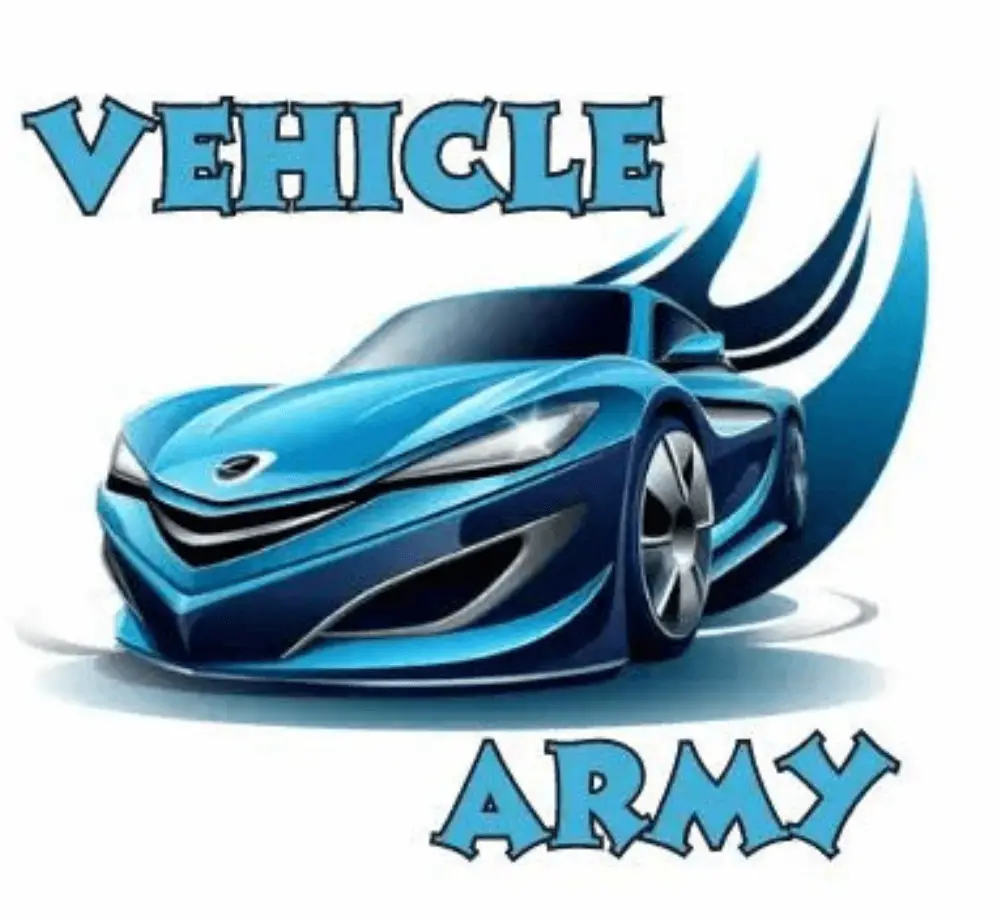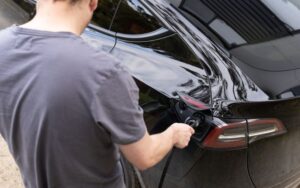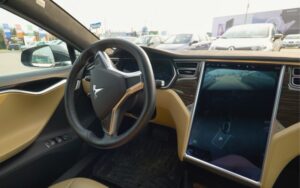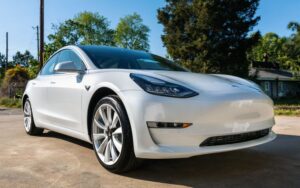Tesla Screen Frozen: All You Need To Know
Last updated on September 12th, 2023 at 03:05 am
Tesla is a well-known brand for electric cars due to their advanced technology and impressive features.
But even such luxurious vehicles have their flaws and can experience malfunctions, particularly with their touchscreens.
These frozen touchscreens have been a frequent source of user complaints, leading to multiple recalls.
As a result, Tesla drivers who depend on the touchscreen may encounter difficulties. But how can you fix this?
There could be various reasons for experiencing a frozen screen on your Tesla. To fix it, the Tesla company advises a hard reset. Press and hold down both buttons on the driving wheel while simultaneously stepping on the brake pedal for approximately ten seconds. If this persists, it may indicate a problem with the Tesla computer system, warranting professional servicing.
If you’re a Tesla user and have encountered a frozen touchscreen without knowing what to do, here’s a guide.
This article provides helpful information on unfreezing your screen, possible causes of the problem, and when you will require a replacement.
Why Is My Tesla Screen Frozen?
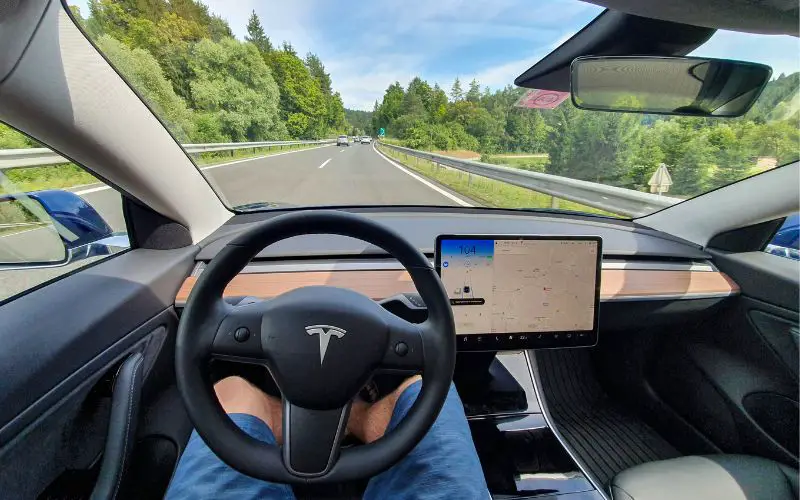
As we mentioned earlier, there are different reasons your Tesla screen could freeze; we’ll explain them below.
Knowing this will enable you to make an informed decision on fixing the problem precisely.
#1. Faulty Tesla Software Updates
Even the best manufacturers experience glitches in their software updates. We’ve seen it before in the IOS update that resulted in lagging warranting complaints from users.
These IOS users even warned others who hadn’t updated their phone’s software not to.
And we’re seeing it again with Tesla’s software update due to unforeseen problems even with its advanced control system.
Often, our Tesla touchscreen usually freezes after a failed update due to poor internet connection or the internal components becoming incompatible.
#2. Music Streaming
Another reason for frozen Tesla screens is the incompatibility with music platforms like Spotify.
Initially, a few Tesla users raised this issue; some didn’t think it was possible until they experienced it.
Conventionally, Tesla screens should accept running music streaming while using the entire screen for other operations.
But unfortunately, some communication challenges arise, resulting in screen display freezing.
Experts looked into this and discovered that it occurs because the onboard computer experiences a never-ending loop.
This loop happens because the music streaming on the Spotify platform creates subroutines. And these subroutines lock into an infinite command, alone or in pairs.
#3. A Faulty Embedded Multimedia Card (eMMC)
Another common cause of Tesla screens freezing is a flawed eMMC or one with an extreme load.
The multimedia cards are a Tesla storage unit, so they will usually undergo extreme stress, which can result in bugs in the operating system.
Otherwise, it could be due to physical problems inflicted by damage over time or during dispatching.
But this eMMC issue isn’t prominent in all Tesla models, only models X and S, which are older.
It’s rarer to face such challenges on newer Tesla models as they have updated media cards.
#4. A Faulty Media Control Unit (MCU)
As with eMMCs, defective or old media units cause a frozen Tesla screen.
But the good news is that even this MCU problem is mainly known to older models as they usually experience software and hardware complications.
Note: Some Tesla Model Y users add that switching USBs during a drive could cause a frozen screen.
How Do I Unfreeze My Tesla Screen?
A hard reset is the conventional Tesla recommendation during a frozen screen issue.
However, if the problem persists beyond that, here are solutions to the possible causes we’ve addressed above.
#1. For Failed Software Updates
A simple soft reset will usually fix the frozen screen after a failed update and requires both buttons on your Tesla driving wheel until the touch screen goes blank.
It usually turns back on after some seconds with all features restored. A hard reset should be the next option if this doesn’t work.
Note: Soft and hard resets are the recommended ways to try to fix a frozen screen before trying other options.
In most cases, they offer desired results independently but require different scenarios.
Below we’ve outlined the differences between both reset options to enable you to choose the suitable one for your situation.
| Soft Reset on Tesla Screens | Hard Reset on Tesla Screens |
|---|---|
| It involves rebooting the screen or OS | It requires shutting down power to reset hardware and software components. |
| It’s the best option for Tesla newbies as it’s quick and easy. | It should be your last option and is for advanced problems. |
| It preserves data on Tesla’s operating system. | It removes all stored data and goes back to the default setting. |
These reset options differ for each Tesla model, so follow the recommended procedures.
#2. Power Cycling
This process involves rebooting Tesla’s hardware and software. To do this:
- Put your leg on the Tesla brake lever.
- Press down the two controls above the scroll wheels on your Tesla steering and the wheels.
- Wait until your screen goes blank and restores. Since this may be time-consuming and require focus, it’s best to park somewhere.
#3. An Upgrade for eMMC and MCU problems
For issues with the eMMc, an upgrade is necessary. But before going through with it, confirm if your Tesla model had a recall.
This part is crucial as Tesla has recalled some models previously, so if your model falls under those categories, you’ll receive a replacement.
The same also applies to MCU problems. Before requesting an upgrade, verify if your Tesla uses an MCU1. If it does, an upgrade to MCU2 is necessary.
In conclusion, set an appointment with Tesla services so the experts can inspect your car and discern the best solution.
How Do You Restart the Touchscreen on a Tesla?
Follow the two easy steps below to restart your Tesla touchscreen during unresponsive times.
- Firstly, put the car in park mode.
- Lastly, press down the two scroll wheels on the steering and wait until the screen goes off. Don’t worry about stepping on the brake pedals; that won’t be necessary.
Afterward, wait until you see the Tesla logo on the screen and the touchscreen restarts.
However, pulling over before doing this is mandatory, as a Tesla in park mode offers no safety features during a ride.
Power cycling is your next option if this doesn’t fix whatever frozen screen issue your Tesla is experiencing. And we’ve explained how to do this above, so refer to the steps.
How Do You Reset the Screen on a Tesla?
You can rest your Tesla screen in three ways, and we’ll explain them below. The first time is the most common and easiest.
#1. First Reset
It’s best to pull over before doing this reset, although some drivers prefer doing this while driving, which isn’t ideal.
Switch your Tesla to park mode and press the scroll wheels for a few seconds until the screen goes off.
Wait another 30 seconds for the rest to complete, and your screen will return to normal if it is a minor issue.
#2. Second Reset
This method is only best when your car is in park mode. And it involves turning the screen on/off.
Go to the main screen, click the touch control option, select safety and security, and then choose the power off option.
Then wait for three minutes. Further, step on the brake, click on the touchscreen, or open your car door, and the screen will turn on.
This reset type clears software bugs and restores it to normal.
#3. Third Reset
This last option requires battery disconnection and falls under the hard reset battery.
And you can do this by removing the 12 volts high voltage Tesla batteries for some minutes before reinstalling them.
It works well for screen issues regarding lost functions and fixes them.
However, some Tesla users find this option debatable because it involves dealing with a tripped fuse and high-voltage components involved.
But others find it ideal as it works. You can contact an expert for help in such a case.
Is There a Recall on Tesla Touch Screen?
There’s a recall on about 130,000 Tesla cars in America due to the Tesla screen overheating and going blank.
This problem occurs because the internal electronic components in the operating system are vulnerable to overheating.
And it occurs especially during charging, resulting in a blank or lagging screen.
Tesla models under this recall include:
- Model S Sedan 2021
- Model S Sedan 2022
- Model X SUVs 2021
- Model X SUVs 202
- Model 3 2022,
- Model Y 2022
But the good news is that Tesla plans to solve this problem using an over-the-air update.
Hence, there’ll be no need to go to service centers for this, as confirmed by the NHTSA, and these updates began rolling out on May 3.
How Long Does Tesla Touchscreen Last?
Tesla experts recommend replacing your touchscreen after five to six years for best performance. However, this isn’t definite, as some factors could influence its lifespan.
Hence, it’s crucial to maintain and clean it often, even with a screen protector. There are several ways to maintain a Tesla touchscreen, as they’re a delicate part of the car.
Cleaning them and avoiding things that could harm them increases their lifespan, helping to retain their value.

Hey, I’m Michael Davis, a 35-year-old with a degree and a love for cars and tech. Since I was a kid, cars have been my thing—so much that I even thought they ran on magic beans! Fast forward, and I’ve built Vehicle Army, your one-stop-shop for easy-to-understand car facts.
